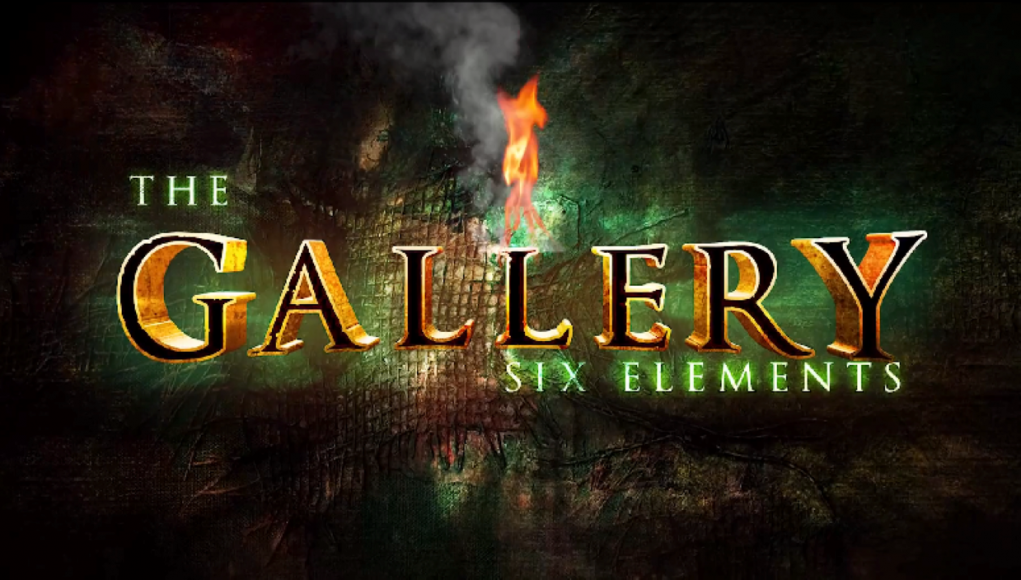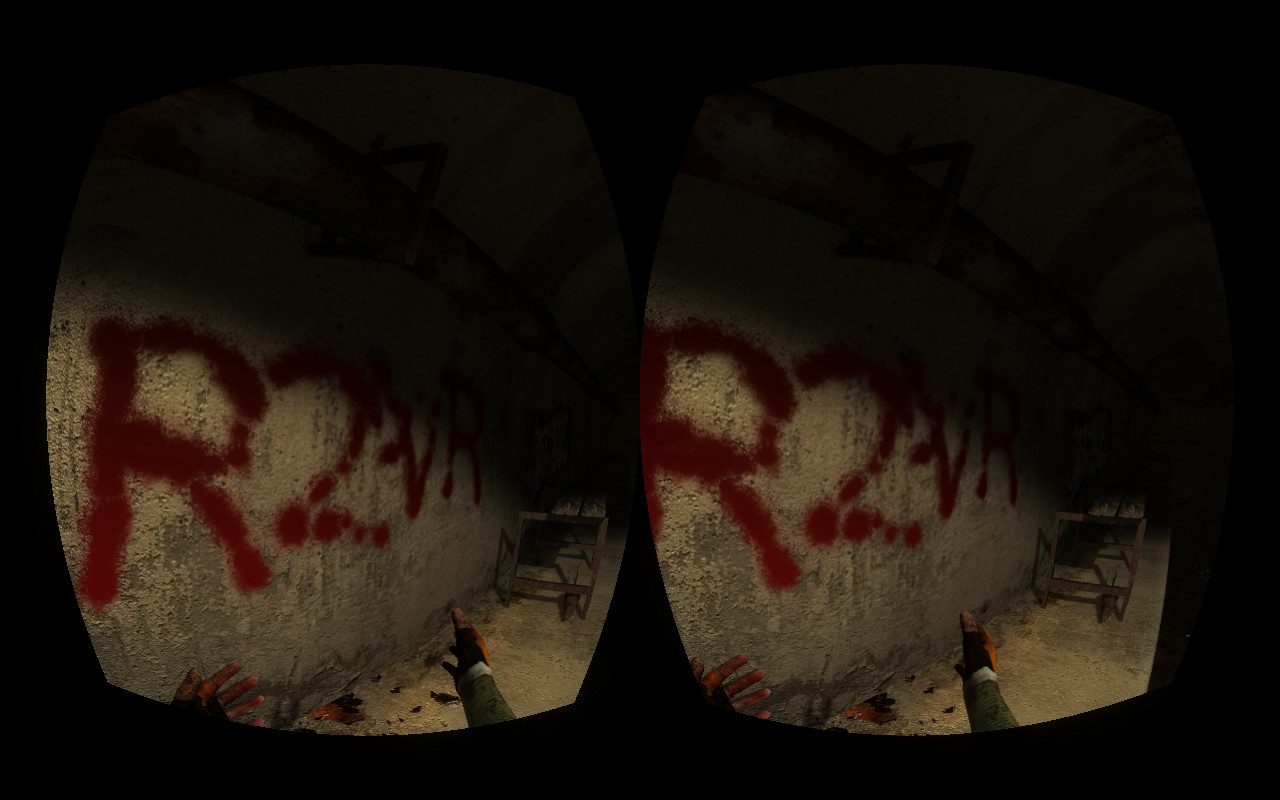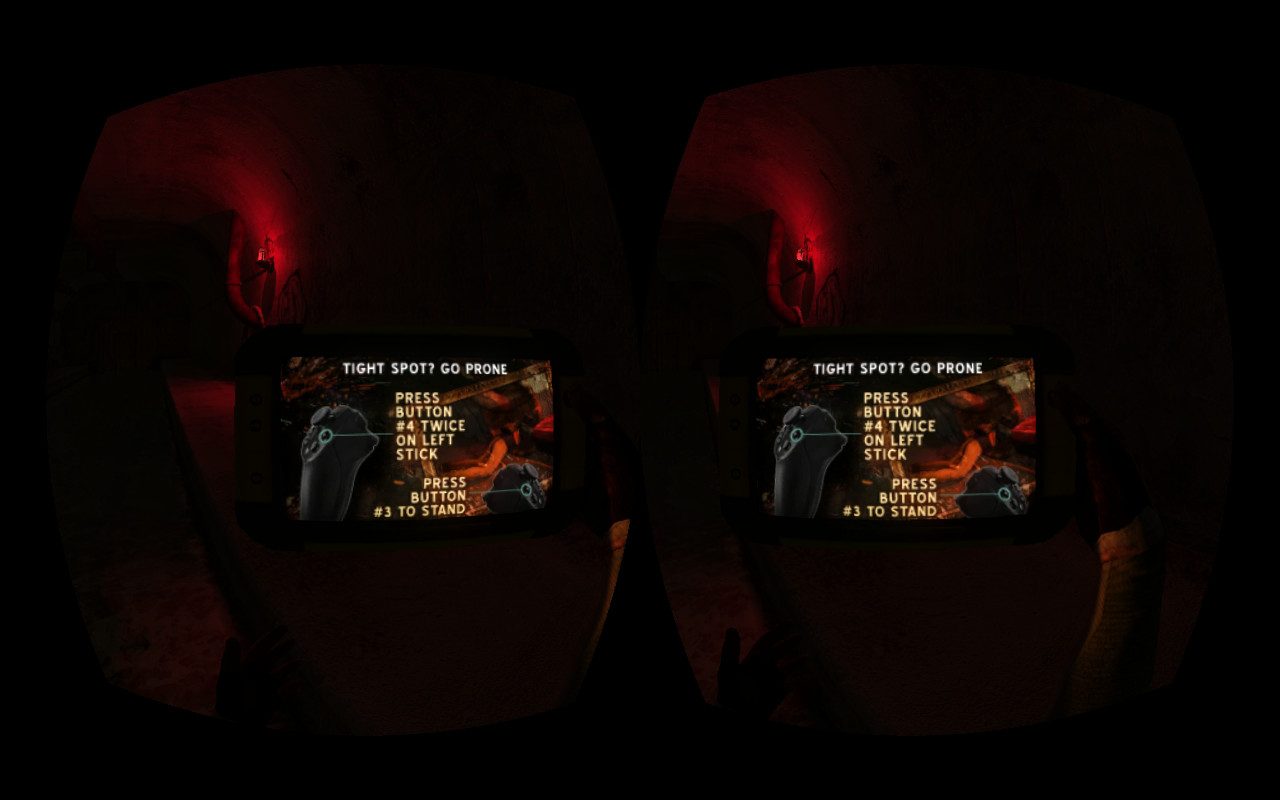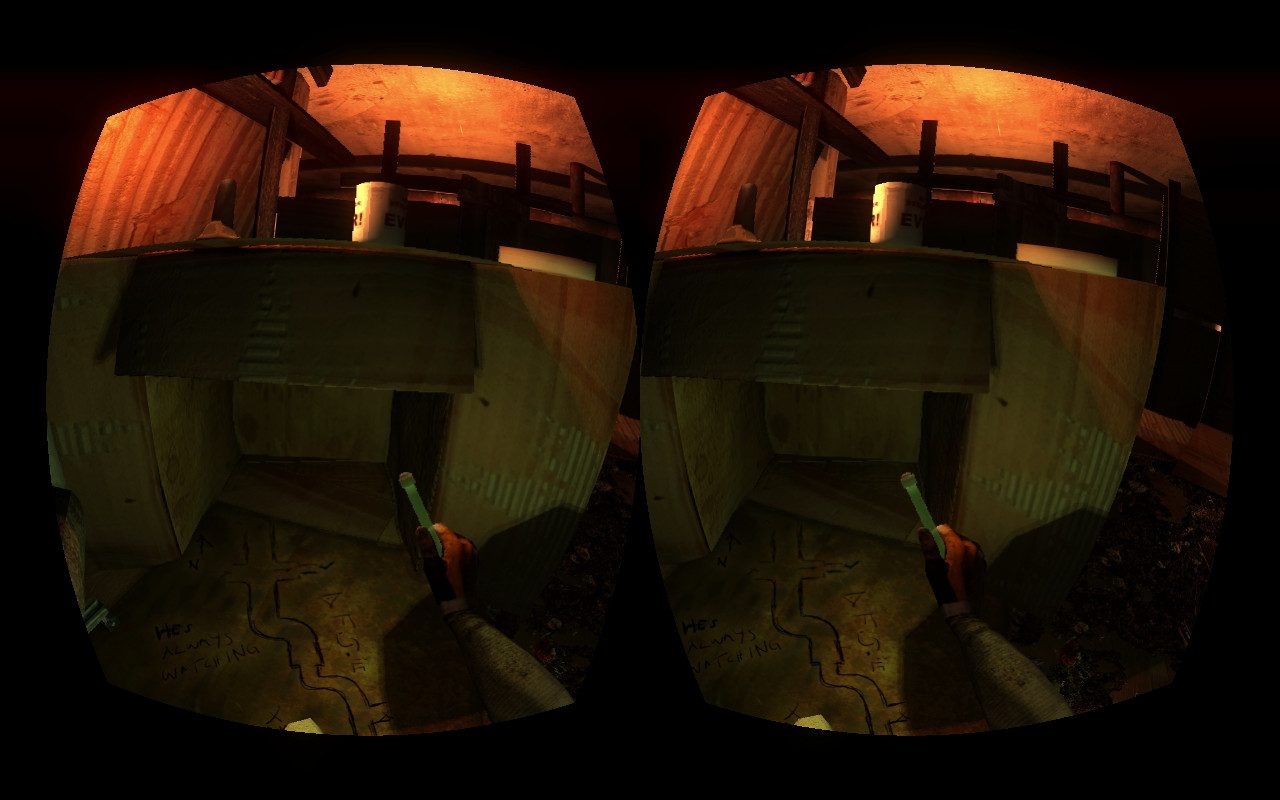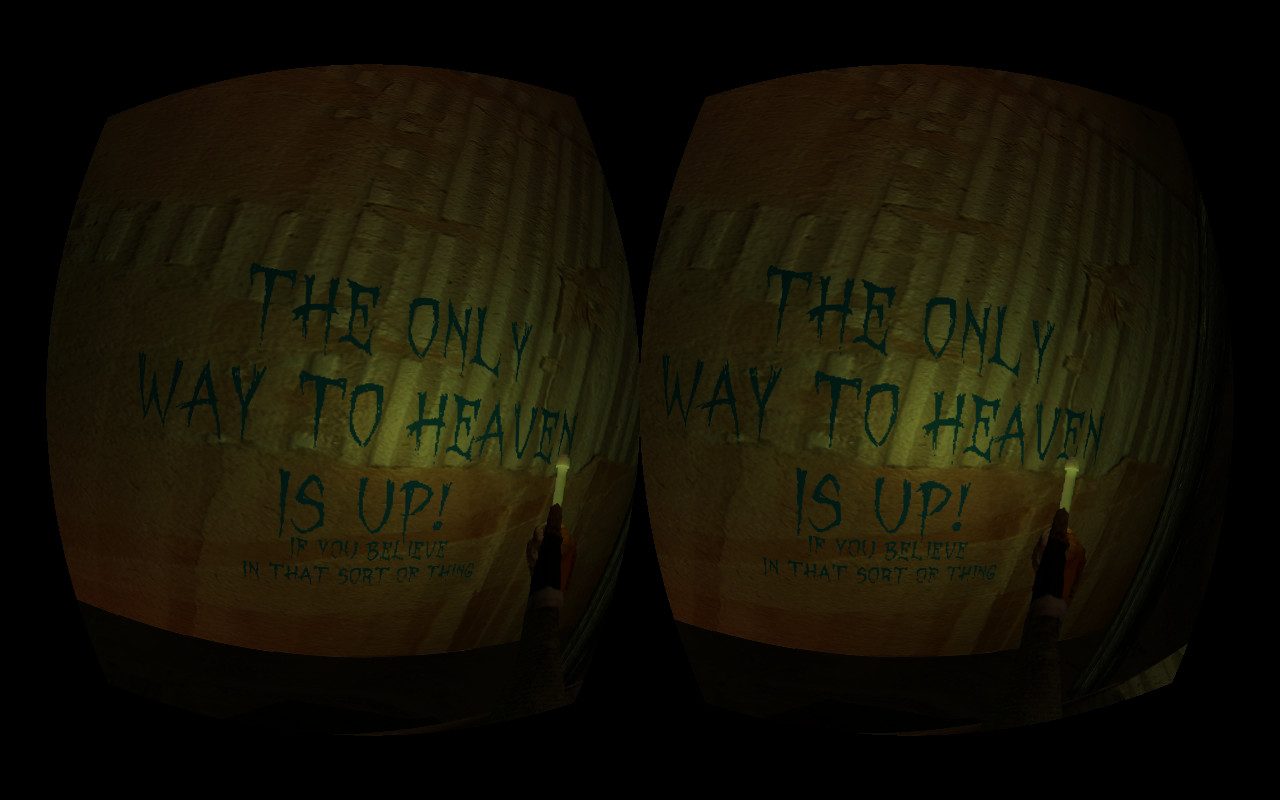We take an early look at one of the most hotly anticipated titles in VR Gaming. CloudHead games were kind enough to give us access to an early alpha of The Gallery: Six Elements.
VR Gaming from the Ground Up
CloudHead games showed the VR Gaming community how crowd-funding should be done when they smashed through their $65,000 goal and walked away with over $80k. The campaign was clever, hard-fought and tireless and the team deserved every penny. But for all the smart PR and self-promotion, the real reasons why The Gallery was funded are twofold:
1) It promised ‘ground up’ support for both the Oculus Rift and the Razer Hydra
2) The game promised to revive the adventure game genre and throw the player into a beautiful and mysterious world inspired by the likes of gaming classics like Myst.
We took an even earlier look at the game during the campaign where Denny from CloudHead was kind enough to answer questions from the community.
For those who backed, the developers plan early access to a special Alpha preview of the game, dubbed the ‘Exploration School’ it’s designed as both a way to introduce players to the game’s mechanics and hopefully garner some feedback from the community which financed the project. It’s a very early version of this Demo we were given to play.
Spooky Spellunking
You’re dropped into the shoes of an intrepid urban explorer, who specialises in plundering the depths beneath cities, looking for .. well who knows really? On this occasion though, you’re being stalked through the gloom by something a wee bit sinister. Quite what the lurking menace is or what it’s motives might be are unclear, but it adds an ominous tone to your exploits.
The demo opens in Grand style by popping you into one of the prettiest calibration routines ever designed, a mysterious looking netherworld with floating focal points to my left and right. Following the on-screen prompts, the game obtains it’s reference points from the HMD and Razor Hydra and throws you through the painting ahead, into the gameworld.
“The head torch is activated with a neatly immersive flourish, raising your hand (as controlled by your Razer Hydra wands) to your head.”
I now find myself at the entrance to a winding series of sewer tunnels beneath an unnamed city. All I have with is my standard issue explorers outfit (visible clearly as you glance down at your virtual avatar’s body) and a head torch. The head torch is activated with a neatly immersive flourish, raising your hand (as controlled by your Razer Hydra wands) to your head. It’s fairly inconsequential as mechanics go, but it’s an illustration of the level of thought CloudHead have sewn into their creation.
At key points, you’ll get on-screen prompts to look down at your tablet computer, which appears in your hand when the game wishes to communicate key information and events to you. You bring the tablet up to your face to read, just as you would in real life, and I find myself waving it around playfully watching the screen’s light play off the tunnel walls.
Pushing on into the darkness I find a glow stick. Intuitively, I reach out and grab it. An eery glow surrounds my vicinity and I marvel at the natural way my virtual limb mimics my real-life actions. I try to throw the glow-stick into the blackness but the object just plonks to the ground – physics are not quite fully implemented yet. A spray can come into view, I pick it up quite naturally and idly graffiti the nearest tunnel wall with my initials and then, inevitably, a collection of puerile images. Sorry, couldn’t help myself.
Light and shadow is key in The Gallery and, to roll out a cliche, can be thought of as another player in the story. The Gallery is based on Unity and I must confess to being surprised at how advanced the lighting model is. Projected shadows are convincing and used expertly to tell the story as well as immerse the player. In terms of production design, it’s too early to get a handle on the gameworld – the entirely of the demo is based in the tunnels as the Exploration School proper was not yet ready. It’s fairly clear though from the assets already in place that the folks at Cloudhead are a talented bunch and having consumed every screenshot they’ve released of later points in the game I’m excited to see more.
Gameplay: Evolved
The Gallery takes a bravely realistic stance on your avatar’s physicality. That is to say, interaction with objects in the environment (and indeed the environment with you) are handled with very little ‘auto assist’. If you reach out and miss a spray can by a few pixels, you won’t pick it up. Much more interestingly, the same is true for that old gaming chestnut, ladders. CloudHead have held true to their intentions of making Razer Hydra integration much more than just a tacked on idiom. When you climb ladders in The Gallery you REALLY climb them — using each wand to guide and clasp each rung and then pull the wand towards you, again in the same way you would in real life.
“When you climb ladders in The Gallery you REALLY climb them — using each wand to guide and clasp each rung and then pull the wand towards you ..”
When it works, it’s sublime and pulls you right into that gameworld. When it doesn’t and you fall helplessly to your death, it’s incredibly unforgiving. There’s a balance that needs to be struck here between realism, immersion and playability (this is still a game after all) — I feel confident however that with just a few minor tweaks this mechanic could become incredibly compelling.
I’m aiming to keep this preview ‘spoiler free’ but suffice it to say, your mysterious stalker makes his/her/it’s presence known at various points throughout the demo in ways that bring to mind both classic horror films like Nosferatu and more modern chillers such as the ‘The Descent’. The technique is extremely effective and compounds the claustrophobia and sense of peril expertly whilst also spurring you on to find out who or what has it in for you. The appearance of this malevolent presence is often swiftly followed by events requiring you to make quick decisions and take actions in order to stay alive, leaving little doubt as to it’s intentions.
In calmer moments, simple ‘physical’ puzzles demonstrate the paradigm shift between standard desktop gaming and the new VR playground. Picking up, manipulating and placing planks of wood in order to traverse perilous gaps may sound fairly ‘run of the mill’, but when your immersed in the world and the ability to reach into that works (via the Hydras) it becomes an almost tactile experience with satisfaction coming from inconsequential actions like getting that plank to fall and lie flat. It’s this ‘sandbox glee’ that the Oculus Rift and the Razer Hydra bring to games and taps into some of my best gaming memories.
However, to paraphrase Marvel comics, with great immersion comes great game-design challenges. Again I see the balance between realism and gameplay as crucial in keeping players engaged. Reaching for objects and not being able to fathom why you’re not able to grasp them or swinging that plank around and it getting stuck in a nearby object result in frustration and sap the glee right out of that sandbox. Again though, I have faith that CloudHead will iron these issues out – another reminder that this is Pre-Pre-Alpha here.
Incredible promise
At present, it’s very difficult to get a handle on the character you play and what story he maybe involved in. Clearly we have our protagonist and antagonist but their relationships and place are undefined as yet. It’s clear however that CloudHead are opting for a sinister and brooding tone, which is something that wasn’t clear before this preview.
The promise held by The Gallery in terms of evolving gaming is pretty evident. Genuinely new gaming interactions like, naturally spraying walls with graffiti or pulling yourself desperately up ladders are brave and innovative ways to bring new experiences to gamers. But there’s a fine balance to be struck between innovation and playability. If Cloudhead can get the balance right, tweak these elements so that they become more intuitive then we’ll have ourselves a collection of new gaming machanics to help draw us further into the game. They’re not quite there yet, but this is early days.
It’s a privilege to be involved and engaged in Virtual Reality gaming as it rises again. Developers like CloudHead are faced with simultaneously enviable and unenviable challenges as they pioneer techniques no-one has had to think about before in order to bring us these dedicated ‘made for vr’ experiences. Denny and his team however are clearly passionate about the technologies however and The Gallery shows enormous potential as one of the first triple A commercial games to appear since the Oculus Rift appeared. For this reason, I’m now even more excited for the future of The Gallery and look forward to seeing even more.
Read our Mini-QA with Denny Unger, Creative Director at CloudHead games here.

